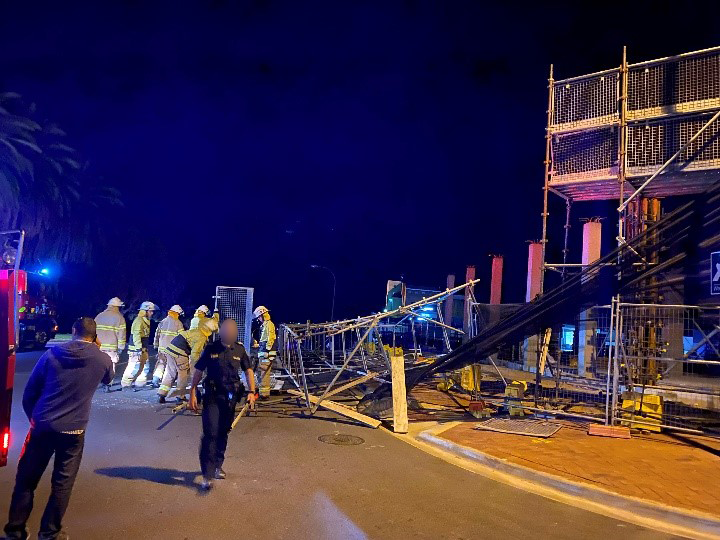SafeWork SA reminds businesses to ensure safe systems of work are in place when using free-standing scaffolding to minimise the risk of a collapse. The collapse or partial collapse of scaffolding poses a serious risk of injury, or death to workers and the general public.
Background
On 19 May 2020, approximately 20 metres of free-standing perimeter containment scaffolding collapsed onto a public street during high winds at Murray Bridge. Fortunately, no one was injured, but the risk was high.

Free-standing scaffolds
A free-standing scaffold is a scaffold that is not attached to any other structure, yet is stable against overturning on its own account or if necessary, assisted by stabilisers, outriggers, counterweights or buttress bays.
The collapse of a scaffold can cause death or significant injury to workers or members of the public and damage surrounding structures.
The height of free-standing scaffolding must not exceed 3 times the minimum base width dimension.
When perimeter containment screens, shade cloth or signs are attached to scaffolding, environmental loads imposed by wind and rain increase the risk of it collapsing or becoming damaged.
Risk control measures
To avoid potential risk to workers’ and public health and safety resulting from the collapse of free standing scaffolding, businesses need to:
- consult with the scaffold designer or supplier before attaching additional parts that may impose a new loads on the scaffold
- ensure the scaffold can withstand any anticipated loads and forces – e.g.. wind loads
- consider improving scaffold stability by:
- staggering the joints in standards
- tying the scaffold to a supporting structure
- guying to a supporting structure
- increasing the stability by securely attaching counterweights
- adding bays to increase the base dimension (buttress bays)
- attaching stabilisers (back propping)
- develop procedures to inspect and maintain the scaffold to make sure it is safe to use and remains that way.
The primary objective of scaffold planning and design is to ensure the most suitable structure is used to provide safe access to stable working platforms, ensuring the risk of collapse is managed before, during and after its placement.
Legal duties
The obligation under the Work Health and Safety Act 2012 (SA) is to ensure the safety of workers and any other persons so far as is reasonably practicable. Everyone in the workplace has work health and safety duties. Some have specific responsibilities for scaffolding, including:
- designers
- scaffolding contractors and workers who carry out scaffolding work
- principal contractors for construction projects where the cost of construction work is $450,000 or more
- in the case of scaffolding companies, those workers may not only be the workers of the immediate client, but also other workers on the construction site. The scaffolding company must do all that is reasonably practicable to ensure the safety of all of those workers
- workers themselves, in particular that they do not alter scaffolding, unless qualified to do so.
Further information
Scaffolding work provides detailed information about erecting, dismantling and modifying scaffolds, tying and anchoring, hazards and risk controls.
Safe Work Method Statements (SWMS) for high risk construction work
AS/NZS1576 Part 1: Scaffolding – general requirements (approved code of practice)
AS/NZS4576: Guidelines for scaffolding


